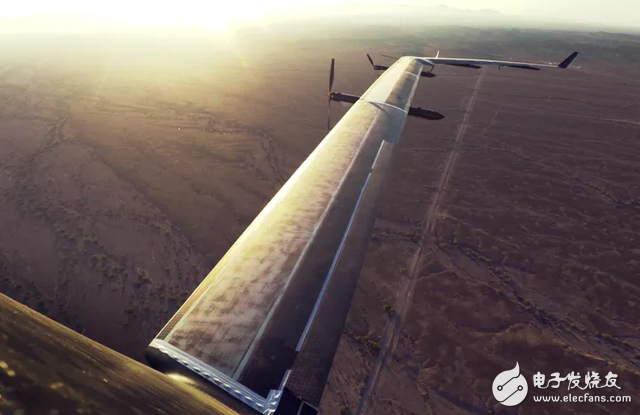In June of this year, Facebook's solar drone Aquila made its first test flight. The Aquila is huge and its wingspan exceeds that of the Boeing 737. Aquila flew over the Arizona desert for more than 90 minutes, but accidentally fell on landing. Facebook has been working for this for two years before the Aquila drone test flight. Facebook hopes to use drones to provide network services to underdeveloped areas that lack a stable Internet signal. The National Transportation Safety Board (NaTIonal TransportaTIon Safety Board) said in a report released on Friday that "the aircraft was badly damaged." The reason for Aquila's landing failure may be strong winds. Aquila was blown off the fairway by the wind before landing, causing the autopilot controller to lower the aircraft's predecessor and accelerate as the plane landed. The impetuous landing caused serious damage to the right wing of the aircraft, but no injuries were caused and the ground was not damaged. In July, Facebook CEO Mark Zuckerberg said in a blog post that the company had planned to let Aquila test flight for 30 minutes, but as the flight went smoothly, the engineers decided to let the aircraft fly twice as much. , a total of 96 minutes. Aquila took off when the sun rose in the early morning. In an extra hour of flight, the air temperature gradually increased. Yael Maguire, who is in charge of the ConnecTIvity Lab, said in an interview with TechCrunch that during the last four seconds of the flight, his team noticed hot air and unexpected winds. . After the plane crashed, Facebook immediately reported a landing failure to the US National Transportation Safety Board, but the company was banned from publishing detailed information about the plane's fall until the regulator completed the report. Facebook said the company is developing an upgraded version of the Aquila drone, and the new version of Aquila will have a new brake system to make the landing of the aircraft smoother. Facebook's goal is to enable Aquila drones to be released continuously for 60 to 90 days because it is solar powered and does not require refueling. Aquila is not Facebook's first Internet access service project. The company also has a free web service project called Free Basics, which provides free, basic network services to 53 countries and cities around the world. However, Indian Internet regulators blocked Free Basics' services in India earlier this year, claiming the service violated network neutrality.
Features of Self Wrapping Split Braided Sleeving
Flammability class: UL94VO/VW-1/V2.
Application of self wrapping Split Braided Sleeving
Braided sleeves are widely used in computer power cord, audio-video, automotive, aviation, wire and cable industries. It has protect and beautify the role. Its unique mesh characteristics but also has good ventilation, and a thermal diffusion function in a timely manner.Wrap wires, protect the wires from erosion and moisture. And beautify the wires.
Self Wrapping Split Braided Sleeving ,Pet Self Closing Wrap,Braided Expandable Sleeving,Automotive Self Closing Sleeve Shenzhen Huiyunhai Tech.Co.,Ltd , https://www.hyhbraidedsleeve.com
Materia l: PET
Diameter: custom
Length: custom
Expanding Ratio: 200%
Color: colorful
Melting point: 230 °C ± 5
Tinting strength: 100 ± 5 °C
Flame Retardant: yes
Temperature endurance: -50 °C~ +150 °C
PET sleeve quality: UL,SGS,Rohs,Reach,etc.
1. Light weight & Flexible & Insulation & UV Resistant & Decoration & Flame-retardant & Durable abrasion resistance & Resistant to chemical degradation, in a wide range of industrial applications.
2. Braided of 0.25mm / 0.2mm Pet monofilament.
3. The open weave construction allows an easy installation on a bundle of hoses and cables, even if some with bulky or large connectors.